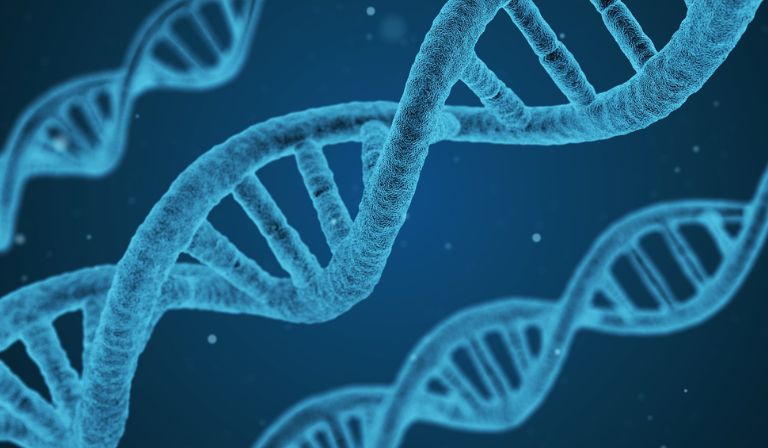Biology, the scientific study of life and living organisms, is a vast and dynamic field encompassing numerous sub-disciplines, from genetics to ecology. As students dive deeper into biology, they encounter complex concepts and processes fundamental to understanding how life operates on both a microscopic and macroscopic scale. However, the extensive terminology, coupled with an in-depth understanding of cellular structures, genetics, evolution, and ecology, can often be overwhelming. This article breaks down some of the essential topics in biology to aid in comprehension, helping students navigate through their assignments with clarity and confidence.
Table of Contents
ToggleThe Cell: The Fundamental Unit of Life
At the heart of biology lies the study of the cell, the basic building block of all living organisms. Cells can be broadly categorized into prokaryotic and eukaryotic cells. Prokaryotic cells, typically found in bacteria and archaea, lack a defined nucleus and membrane-bound organelles. In contrast, eukaryotic cells, present in plants, animals, fungi, and protists, have a distinct nucleus and various specialized organelles.
Understanding cellular structure and function is essential for grasping biology basics. Key organelles include the nucleus, which houses DNA; the mitochondria, known as the powerhouse of the cell; and ribosomes, which are involved in protein synthesis. Additionally, plant cells contain chloroplasts that enable photosynthesis, a process absent in animal cells.
A thorough understanding of cell division is also crucial. Mitosis and meiosis are two different types of cell division, each with its purpose. Mitosis results in two identical daughter cells, aiding growth and tissue repair, while meiosis produces genetically diverse gametes, playing a critical role in reproduction and genetic variation.
Genetics: The Blueprint of Life
Genetics is the branch of biology concerned with the study of genes, genetic variation, and heredity in organisms. It explores how traits are inherited and passed down from one generation to the next. Central to genetics is the understanding of DNA (deoxyribonucleic acid) and RNA (ribonucleic acid), the molecules that carry genetic information.
DNA consists of two strands forming a double helix, with each strand composed of nucleotides arranged in a specific sequence. These sequences code for proteins, the molecules that carry out various functions within the organism. RNA, in turn, plays a crucial role in translating this genetic code into proteins.
In genetic inheritance, traits are determined by alleles, different forms of a gene. Each individual inherits two alleles for a trait, one from each parent. The interactions between these alleles determine the phenotype, or physical expression of a trait. Dominant alleles mask the expression of recessive alleles, while codominance and incomplete dominance present more complex inheritance patterns.
Evolution: Understanding the Diversity of Life
Evolutionary biology seeks to explain the diversity of life on Earth and the processes that lead to the development of new species. Charles Darwin’s theory of natural selection remains a cornerstone of evolutionary thought. According to this theory, organisms with traits that provide an advantage in their environment are more likely to survive and reproduce, passing on these advantageous traits to their offspring.
Over time, these small changes accumulate, resulting in the evolution of new species. Genetic mutations, gene flow, genetic drift, and sexual selection are other mechanisms that contribute to evolutionary change. For instance, genetic mutations introduce new genetic material, which can lead to new traits. Gene flow, the transfer of genetic material between populations, promotes genetic diversity, while genetic drift refers to random changes in allele frequencies within a population.
Understanding evolution also requires examining the fossil record, comparative anatomy, and molecular evidence. Fossils provide insight into the organisms that existed millions of years ago, allowing scientists to trace the ancestry of modern species. Comparative anatomy reveals similarities in structures across different species, indicating a common evolutionary origin.
Ecology: The Study of Interactions in the Environment
Ecology examines the interactions between organisms and their environment. It is an interdisciplinary field encompassing elements of biology, geography, and environmental science. Ecosystems, which are communities of organisms interacting with their physical environment, form the foundation of ecological study.
In an ecosystem, organisms play various roles. Producers, such as plants and algae, convert sunlight into energy through photosynthesis. Consumers, including herbivores, carnivores, and omnivores, rely on other organisms for food, while decomposers like bacteria and fungi break down organic matter, returning essential nutrients to the ecosystem.
The study of populations is another critical aspect of ecology. Population ecology focuses on factors influencing population size and growth, including birth rates, death rates, immigration, and emigration. The carrying capacity of an environment, or the maximum population size it can sustain, plays a significant role in population dynamics. When a population exceeds its carrying capacity, it experiences environmental stress, often leading to a decline in numbers.
Human impact on ecosystems is an increasingly important area of ecological research. Deforestation, pollution, climate change, and habitat destruction disrupt ecosystems, threatening biodiversity and causing species extinction. Conservation biology, a branch of ecology, seeks to mitigate these impacts by developing strategies to protect endangered species and restore habitats.
Photosynthesis and Cellular Respiration: The Energy Cycle
Photosynthesis and cellular respiration are two essential processes that power life on Earth. Photosynthesis occurs in plants, algae, and certain bacteria, allowing them to convert sunlight into chemical energy stored in glucose. This process takes place in the chloroplasts and involves the conversion of carbon dioxide and water into glucose and oxygen.
On the other hand, cellular respiration occurs in the mitochondria of both plant and animal cells. This process breaks down glucose molecules to release energy in the form of adenosine triphosphate (ATP), which powers cellular activities. Cellular respiration consists of three main stages: glycolysis, the Krebs cycle, and the electron transport chain. Oxygen is essential for this process, making it an aerobic process. However, in the absence of oxygen, cells can undergo anaerobic respiration, producing energy less efficiently.
Photosynthesis and cellular respiration form a cycle that sustains life on Earth. The oxygen produced during photosynthesis is used in cellular respiration, while the carbon dioxide generated by cellular respiration is utilized in photosynthesis, maintaining a balance within ecosystems.
Molecular Biology: The Study of Life at a Molecular Level
Molecular biology focuses on the molecular mechanisms underlying cellular processes, including DNA replication, transcription, and translation. DNA replication is a critical process that occurs before cell division, ensuring that each daughter cell receives an identical copy of genetic material. Transcription is the process by which DNA is copied into RNA, specifically messenger RNA (mRNA), which carries genetic instructions from the nucleus to the ribosomes.
Translation, the process of synthesizing proteins from mRNA, occurs in the ribosomes. Proteins, composed of amino acids, perform a wide array of functions within organisms, from structural support to catalyzing biochemical reactions. Enzymes, a class of proteins, are particularly vital as they speed up chemical reactions, enabling cellular processes to occur at a rate necessary for life.
Advancements in molecular biology have led to remarkable scientific breakthroughs, such as genetic engineering and the development of CRISPR technology, allowing scientists to edit genes with precision. These innovations hold great promise in fields like medicine, agriculture, and environmental science.
Conclusion: Embracing the Complexity of Biology
Biology offers profound insights into the workings of life, encompassing diverse fields from genetics and evolution to ecology and molecular biology. While these topics may initially appear complex, they are interconnected, each contributing to a comprehensive understanding of life. As students explore these concepts, they not only gain knowledge but also develop critical thinking and analytical skills, essential for success in scientific study.
The journey through biology is one of discovery, where curiosity drives understanding, and each answer raises new questions. By embracing the complexity of biology, students can appreciate the wonders of the natural world and the intricate processes that sustain life on Earth. Whether in academic studies or personal exploration, biology invites us to delve deeper, question assumptions, and marvel at the resilience and diversity of life.











